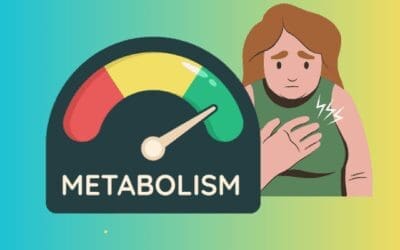Remember that feeling after a great workout? The endorphin rush, the surge of energy, the sense of accomplishment? Staying active over 40 lets you keep experiencing those amazing benefits. It helps you manage weight, reduce stress, sleep better, and even keeps you mentally sharp. Plus, there’s the undeniable fun factor! From group fitness classes to conquering a challenging hike with friends, exercise can be a fantastic social outlet and mood booster.
The good news? You can keep enjoying these activities well into your 40s and beyond. The not-so-secret secret? As our bodies change, we need to adapt our approach to exercise to stay active and injury-free.
This article will equip you with the knowledge you need to keep moving safely and pain-free.
The Science of Injury Prevention

As we age, our bodies undergo some natural changes that can make us more susceptible to exercise injuries. Here’s a breakdown of why this happens and how to listen to your body to stay safe:
Why We Get Injured
- Decreased Bone Density: Our bones naturally become less dense as we age, making them more prone to fractures.
- Reduced Muscle Mass: Muscle loss is another common consequence of aging. Strong muscles support and protect our joints, so reduced muscle mass can increase our risk of strains and sprains.
- Less Joint Flexibility: Over time, our joints tend to become stiffer and less flexible. This can limit our range of motion and make us more susceptible to injuries.
Listen to Your Body
Pain is your body’s way of communicating. It’s crucial to learn the difference between “good” pain and “bad” pain during exercise.
- Good pain: This is a mild burning sensation or tightness in your muscles that typically occurs during exercise and subsides shortly after you stop. It’s a sign that your muscles are working hard and getting stronger.
- Bad pain: This is a sharp, throbbing pain that indicates a potential injury. If you experience this type of pain, stop the activity immediately and consult a doctor or physiotherapist.
Warm-Up and Cool-Down
A proper warm-up prepares your body for exercise by gradually increasing your heart rate, blood flow, and muscle temperature. This helps to improve flexibility, reduce stiffness, and prepare your joints for movement. Here are some basic warm-up tips:
- Light Cardio: Start with 5-10 minutes of light cardio, such as brisk walking, jogging in place, or jumping jacks.
- Dynamic Stretches: These stretches involve gentle movements that mimic the activity you’ll be doing. For example, arm circles before swimming or leg swings before running.
- Focus on Major Muscle Groups: Pay attention to the muscle groups you’ll be using most during your workout.
A cool-down helps your body return to its resting state gradually. It also helps to prevent muscle soreness and stiffness. Here’s what a cool-down should include:
- Static Stretches: Hold these stretches for 15-30 seconds each, focusing on major muscle groups.
- Light Cardio: Similar to your warm-up, finish with 5-10 minutes of light cardio, such as walking or gentle yoga poses.
Warm-up and cool-down examples will be tailored to specific activities in a later section.
Smart Training: Exercise Strategies to Minimize Risk

Finding the Right Fit
The key to staying active and injury-free is choosing activities you enjoy and that suit your current fitness level. Don’t feel pressured to jump into a high-impact sport if you haven’t exercised in a while. Here are some tips:
- Start with activities you find fun: This will make you more likely to stick with your exercise routine in the long run.
- Consider your fitness level: If you’re a beginner, focus on low-impact activities like walking, swimming, or yoga. These activities are easy on your joints and a great way to build a foundation.
- Talk to your doctor: If you have any pre-existing health conditions, consult your doctor before starting a new exercise program.
The Power of Consistency
While it might be tempting to push yourself with intense workouts every now and then, consistency is actually more important for injury prevention. Here’s why:
- Regular exercise strengthens your muscles and improves your cardiovascular health. This makes your body more resilient and better able to handle physical activity.
- Sporadic high-intensity workouts can put undue stress on your body, increasing your risk of injury. Aim for shorter, more frequent workouts instead.
Cross-Training
Cross-training involves incorporating different types of exercise into your routine. This keeps things interesting, challenges your body in new ways, and helps prevent overuse injuries. Here are some examples:
- Running: Pair your runs with swimming or cycling to give your legs a break while still getting a great cardio workout.
- Swimming: Add strength training exercises like bodyweight squats and lunges to your swimming routine to build muscle and improve overall fitness.
- Weightlifting: Complement your weightlifting with yoga or Pilates to improve flexibility and balance.
Form Matters
Proper exercise form is crucial for maximizing the effectiveness of your workout and minimizing your risk of injury. Here’s why:
- Using the correct form ensures you’re targeting the intended muscle groups. This helps you get the most out of your exercises.
- Improper form puts unnecessary stress on your joints and muscles, increasing your risk of strains and sprains.
Focus on proper form by
- Watching instructional videos online or attending a beginner’s exercise class.
- Consulting a certified personal trainer who can assess your form and provide personalized guidance.
Listen to Your Limits
Your body needs time to recover from exercise. Don’t push yourself too hard, too fast.
- Rest days are essential for muscle repair and rebuilding. Aim for at least one rest day per week, and listen to your body. If you’re feeling sore or fatigued, take an extra day off.
- Pay attention to your body’s signals. If you experience pain during exercise, stop the activity and rest. Pushing through pain can lead to injury.
By following these smart training strategies, you can minimize your risk of injury and enjoy an active lifestyle well into your 40s and beyond.
Strength and Stability: Building a Resilient Body

The Importance of Strength Training
Strength training may not be the first thing that comes to mind when you think of injury prevention, but it’s a powerful tool. Here’s how:
- Muscle mass acts like armor for your joints. Stronger muscles provide better support and stability for your bones, reducing your risk of injuries like sprains and strains.
- Strength training also helps improve bone density. This is especially important as we age, when our bones naturally become more fragile.
Start Simple, Stay Safe
You don’t need a fancy gym membership or expensive equipment to get started with strength training. Here are some beginner-friendly exercises you can do at home using just your bodyweight or resistance bands:
- Bodyweight Squats: Stand with your feet shoulder-width apart, toes slightly pointed outward. Lower your body as if you’re going to sit in a chair, keeping your back straight and core engaged. Push through your heels to return to standing.
- Lunges: Step forward with one leg, lowering your body until both knees are bent at 90-degree angles. Push through your front heel to return to standing and repeat with the other leg.
- Push-ups (modified): If regular push-ups are too challenging, start on your knees. Place your hands shoulder-width apart and lower your chest towards the ground, keeping your elbows close to your body. Push back up to starting position.
- Rows (resistance band): Anchor a resistance band around a sturdy object like a door handle. Hold the band with both hands, palms facing towards you, and pull your elbows back as if you’re rowing a boat. Squeeze your shoulder blades together at the top of the movement.
Balance Matters
Balance is key for staying active and preventing falls, especially as we age. Here are a few simple balance exercises you can add to your routine:
- Single leg stand: Stand on one leg for 30 seconds, then switch legs. Aim to progress to holding a weight in each hand as you get more comfortable.
- Heel-toe walk: Walk heel-to-toe in a straight line, taking small steps. Maintain good posture and focus on keeping your core engaged.
- Tai Chi: This mind-body practice incorporates gentle movements and weight shifting, which can improve balance and coordination. There are many beginner-friendly Tai Chi classes available online or in your community.
Remember to start slow and gradually increase the difficulty of these exercises as you get stronger. It’s also important to listen to your body and take rest days when needed.
Fueling Your Fitness: Nutrition for Active Adults

Diet for Injury Prevention
What you eat plays a major role in keeping you active and injury-free. Just like your car needs fuel to run smoothly, your body needs the right nutrients to repair itself and perform at its best. Here’s why:
- Proper nutrition helps your body recover from exercise. After a workout, your muscles need protein to rebuild and repair tiny tears. Other nutrients are also needed to replenish energy stores and support overall health.
- A balanced diet strengthens your immune system. This helps your body fight off illness and infection, which can sideline you from your workouts.
Focus on Whole Foods
Instead of relying on processed foods and sugary drinks, focus on filling your plate with whole foods. Here’s what to include:
- Fruits and vegetables: Packed with vitamins, minerals, and antioxidants, these colorful powerhouses support overall health and recovery.
- Whole grains: Whole grains provide sustained energy and fiber, which keeps you feeling full and helps with digestion. Examples include brown rice, quinoa, and whole-wheat bread.
- Lean protein: Lean protein sources like chicken, fish, beans, and lentils are essential for muscle building and repair.
Hydration is Key
Dehydration can lead to fatigue, muscle cramps, and decreased performance. Here’s how to stay hydrated:
- Drink plenty of water throughout the day, even when you’re not thirsty. Aim for eight glasses per day as a baseline, and adjust based on your activity level and climate.
- Consider sports drinks for longer or more intense workouts. These can help replenish electrolytes lost through sweat.
By fueling your body with the right nutrients and staying hydrated, you’ll give yourself the best chance to stay active, recover from exercise, and avoid injuries.
Knowing When to Seek Help
Listen to your body! While some muscle soreness is normal after exercise, there are certain signs that indicate a potential injury requiring professional medical attention. Here’s what to watch out for:
- Persistent pain: Pain that doesn’t improve with rest or gets worse over time is a red flag.
- Swelling: Significant swelling around a joint can indicate a sprain, strain, or even a fracture.
- Decreased range of motion: If you suddenly find it difficult to move a joint through its full range of motion, it could be a sign of injury.
Don’t Be Afraid to Ask for Help:
If you experience any of these warning signs, don’t hesitate to consult your doctor or a physiotherapist. Early diagnosis and treatment can help prevent further injury and speed up your recovery.
Remember, a healthcare professional can provide personalized guidance and ensure you get back to your favorite activities safely.
To Sum Up
Staying active over 40 is a fantastic way to boost your health and well-being. By following these tips, you can minimize your risk of injuries and keep moving with confidence:
- Listen to your body: Pay attention to pain signals and adapt your exercise routine accordingly.
- Warm-up and cool-down: Prepare your body for activity and promote recovery.
- Choose activities you enjoy: Find exercises you find fun and that suit your fitness level.
- Strength training is your friend: Build muscle mass to improve bone density and joint stability.
- Focus on proper form: Get the most out of your workouts and minimize stress on your joints.
- Prioritize rest and recovery: Give your body time to repair and rebuild.
- Fuel your body with nutritious foods: Eat a balanced diet and stay hydrated.
Remember, injury prevention is key to a long-term, sustainable fitness journey. By taking care of your body, you can keep enjoying the many benefits of exercise well into your golden years. Now go out there and get active!






